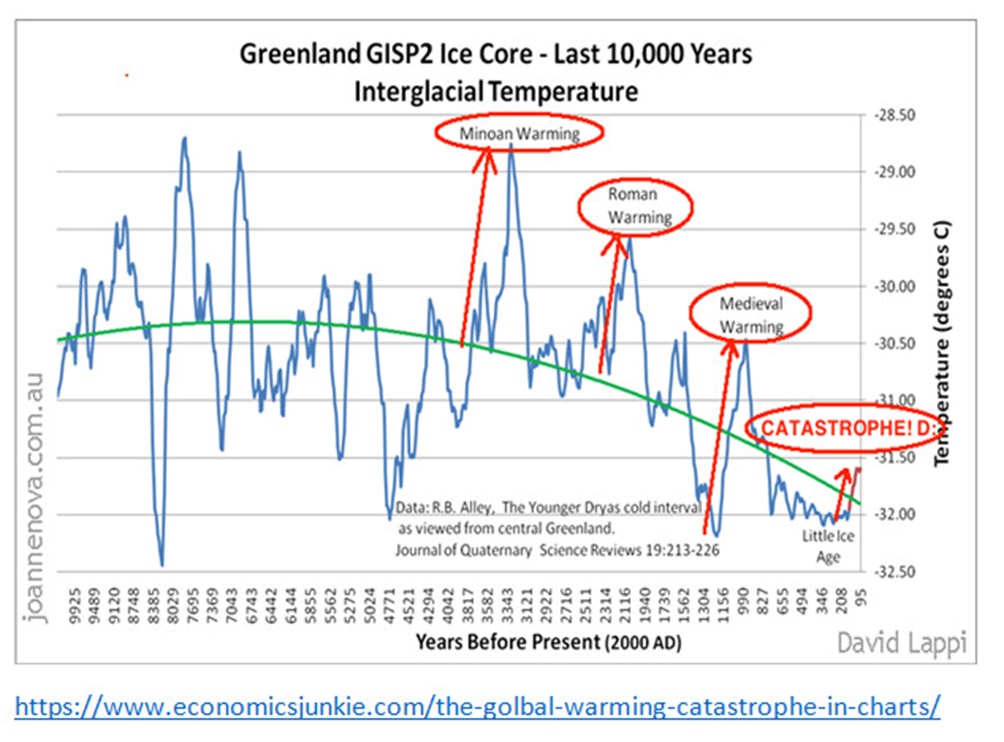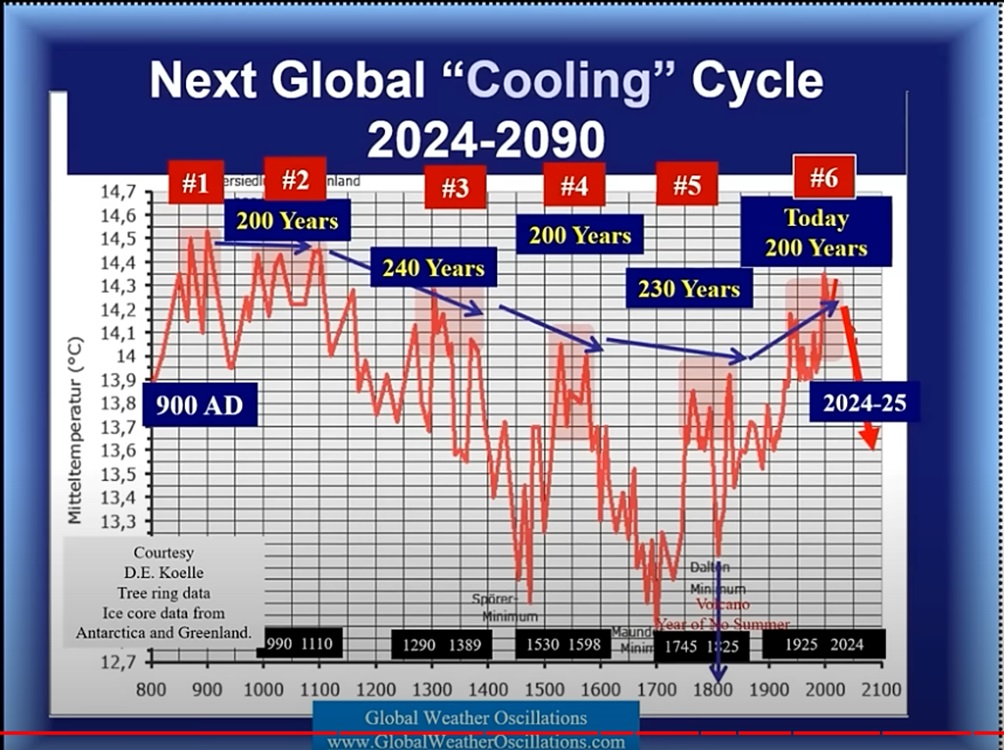Recent statements by Green Party members and others show that they are not up-to-date with the latest information on climate change and are ignoring many critical factors. They really need to do their homework and talk to people who understand past climate, the IPCC technical reports, the limitations of climate models and the New Zealand power system.
Underlying almost everything we hear from the mainstream media is based on an assumption that if New Zealand reduces its emissions of greenhouse gases, our climate will “improve”. This is nonsense because any reduction we make in greenhouse gases will swiftly be blown off into the Pacific. It is also worth noting that, according to Bjorn Lomborg, if every country that signed the Paris Agreement abided by their promises until 2100, the world would be cooler by a trivial 0.17°. As many countries are not abiding by their promises, we cannot expect any measurable reduction in temperature. New Zealand’s only sensible option is to adapt to our ever-changing climate, and stop squandering money on a futile attempt to control it.
We hear a lot about 1.5° “tipping points” that, it is claimed, could melt Greenland ice, destroy Amazon rainforest, trigger rapidly rising sea levels, and so on. The evidence from ice cores is that previous warm periods were warmer than pre industrial temperatures by more than 1.5°. The Bronze Age, the Roman and the Mediaeval warm periods all brought prosperity to many countries. Without a prosperous economy they could not have afforded to build so many cathedrals!
Regarding recent weather disasters, many commentators seem to be unaware that past weather events were at least as severe and that much of the flooding was due to inadequate drainage in urban areas. For instance, Esk valley floods were as bad in 1938 and worse in 1897. “He who ignores history is doomed to repeat it”.
As a result of working in Afghanistan, Nigeria and many other developing countries, I have learned that only prosperous economies can afford to look after the environment. Which is why the RMA was set up to provide a reasonable balance between development and the environment. Starving people care more about food than the environment!
I do not understand Green Party claims that food growing capacity is diminishing when the evidence is that world food production is increasing rapidly from improved farming methods and irrigation. The increased level of carbon dioxide has helped by boosting agricultural productivity by more than 10%.
We hear lots of claims that inaction in emissions comes with a massive financial bill from the Paris Agreement. Nonsense: the Agreement does not have penalties. Given its futility, New Zealand should either opt out of the Agreement or, like the majority of countries that have signed the Agreement, ignore it. Given that Article 2(b) says that we should not do anything that threatens food production, why are so many people complaining about removing agricultural emissions from the Emissions Trading Scheme?
If we adopt the Green Party agenda, it will decimate our agricultural industry, increase the cost of transport and make electricity more expensive and less reliable. It will also increase world emissions because we will have to import goods made with coal fired electricity instead of making them ourselves with mostly renewable electricity. Our economy will dive and less money will be available to look after the environment. Poor people will suffer most.
The Government’s latest Climate Strategy says that climate change is already costing New Zealand and the costs are likely to grow. It is notably silent on whether or not anything that we do will change our climate. But the whole thrust of the strategy implies that this is the case. Deliberate deception? People don’t expect governments to spend vast amounts of money for no return but this is happening.
The first pillar of the Strategy is to build up our resistance to inevitable climate change: this can only be a good move.
The second pillar of the Strategy says that they will rely on the market to reduce emissions at the lowest cost. Which is certainly an improvement on the current situation where nobody considers “the bang for the buck” of various options and chooses the best. But they don’t seem to have realized that, the way our crazy electricity market works, the end result is that consumers are often paying carbon tax on hydropower. That needs fixing first!
The third pillar is to have clean energy abundant and affordable. It might be abundant but it is certainly not affordable because of the very high cost of providing backup for the times when the wind is not blowing and the sun is not shining.
The fourth is to have world leading innovation boosting the economy and the fifth is to have nature based solutions addressing climate change. I’m not sure what they’re getting at. If this includes growing “carbon forests” and building solar farms on productive farmland then they are flying in the face of Article 2 of the Paris Agreement.
They also plan to have the taxpayer fund 10,000 new charging points for those people rich enough to flaunt their green credentials by buying electric cars. If they had done their homework, they would have realized that the electric car industry is in trouble worldwide because not enough people want to buy them: for instance 46% of electric car owners in the United States are saying that they wouldn’t repeat the experiment. As electric cars are one of the most expensive ways of reducing carbon dioxide, this would seem to conflict with Strategy 2.
So what should our new government do to address natural or man-made climate change without impoverishing the country?
- Look at the emissions scenario RCP8.5 which is used as a key input into the computer models that postulate bigger floods, major sea level rises and the like. The United Nations has said that the RCP8.5 scenario is obsolete and extreme and should not be used for policy-making In spite of that it is used by most organisations in New Zealand when setting policies associated with climate change. If, instead, the scenarios RCP2.0 or RCP4.5 that are currently advocated by the UN, International Energy Agency and others were used, the models would project a modest level of warming that can be handled by adapting to whatever a changing climate visits upon us.
- Do more about improving drainage in high intensity suburban areas and limiting development or, like the people on the Sepik river in New Guinea, building elevated houses in areas that have flooded previously.
- Consider all options to constrain power price rises in our already 80% renewable power system.
- Promote gas exploration to substitute for coal and fuel the fast response generating plant needed to back up wind and solar power. More gas means that we burn less coal and so reduce overall emissions.
- Revive shelved major hydro developments and consider safe, reliable and emissions free nuclear power. Both are better than continuing with wind and solar power and the very expensive energy storage facilities that are needed to keep the lights on when the wind and the sun are not delivering.
Open debate on climate change is desperately needed. “The science is NOT settled”!
Note:
*The first diagram provides scientific evidence that previous warming periods were warmer than now.
*The second diagram provides evidence that we are at the beginning of a cooling cycle!



